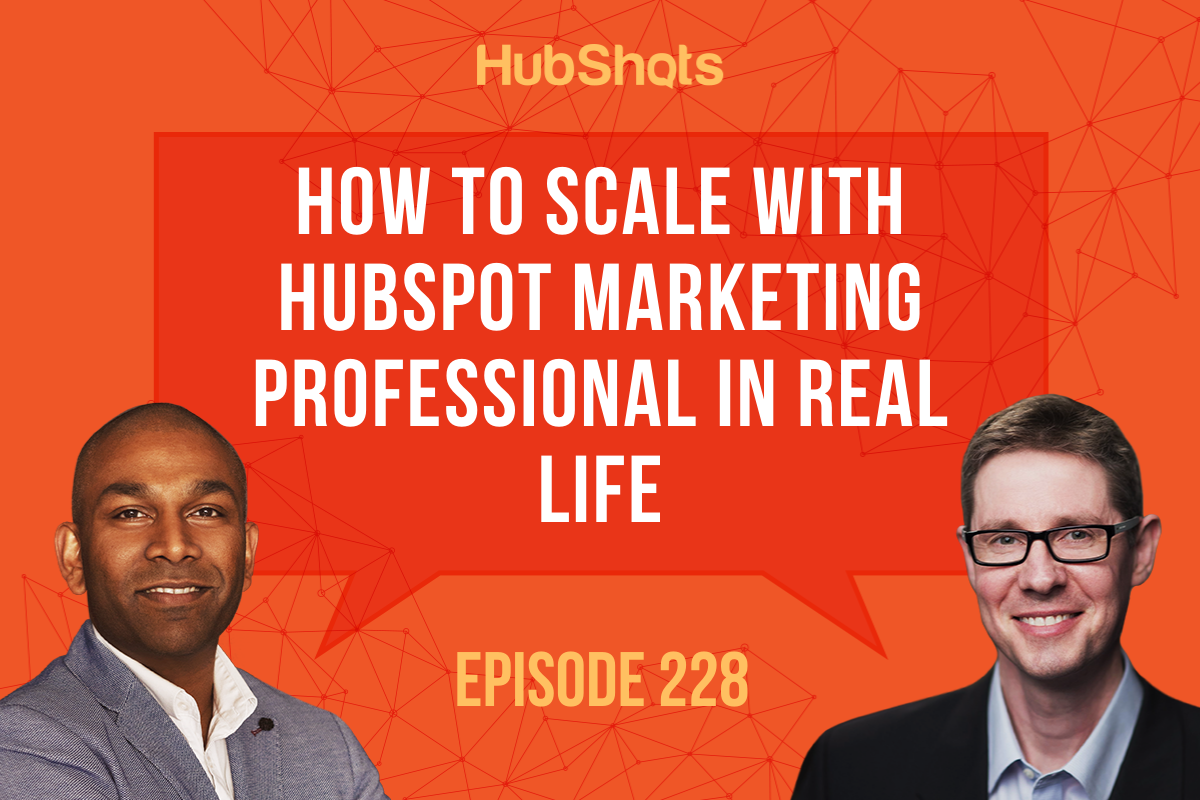Episode 229: How To Improve Your Sales Results using HubSpot Sales Professional
Welcome to HubShots Episode 229: How To Improve Your Sales Results using HubSpot Sales Professional This edition we dive into: Deal stage, task,...
This edition we dive into:
You can listen to this episode of the show here.
Did a colleague forward this episode to you? Sign up here to get yours every Friday.
Please forward this on to your work colleagues.
Recorded: Monday 23 November 2020 | Published: Friday 27 November 2020
Last episode we discussed how to use HubSpot for small businesses. In this episode and next week’s episode we consider how mid-large companies can use the professional features of HubSpot to elevate their growth.
This episode we discuss the Pro features of HubSpot Marketing Hub. In next week’s episode we discuss the Pro features of HubSpot Sales Hub.
A significant part of larger company growth is focussed on automation - having automated processes to increase efficiency and reduce errors.
We’ve covered how much we love workflows many times before on the show, here’s a few highlights related to marketing:
When you first move to HubSpot Marketing Pro, here’s the workflows we put in place initially (for marketing):
You can do this with Smart content on:
Top 3 things we often use it for.
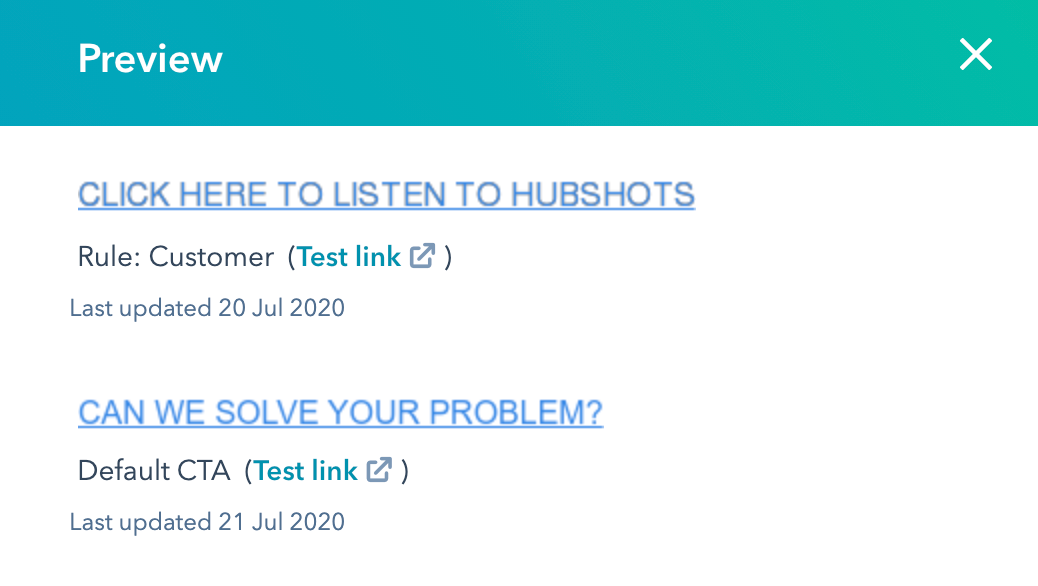
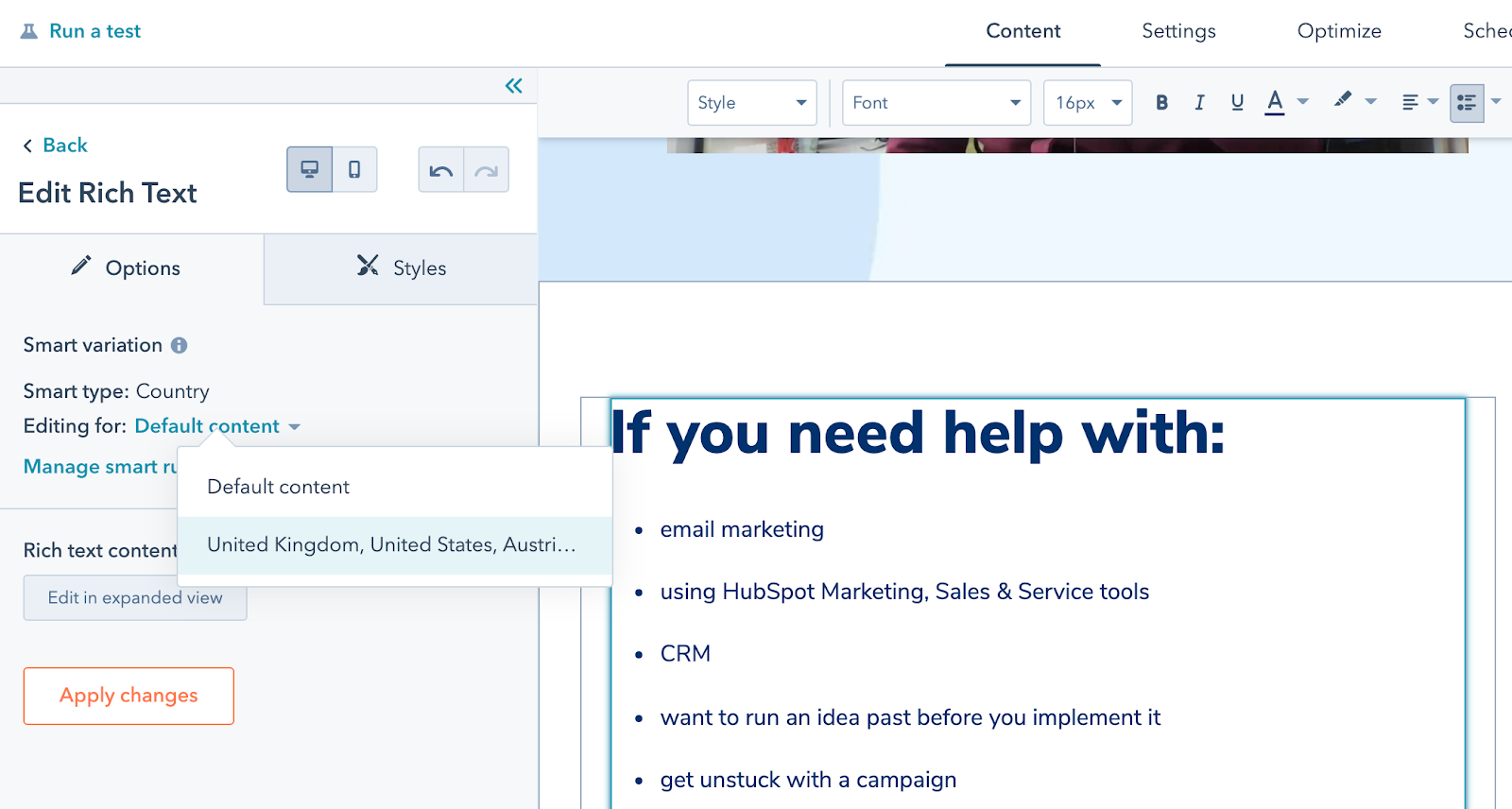
HubSpot Pro has a number of tools for analysing as well as planning for Google optimisation.
At a domain level HubSpot provides a list of recommendation to review:
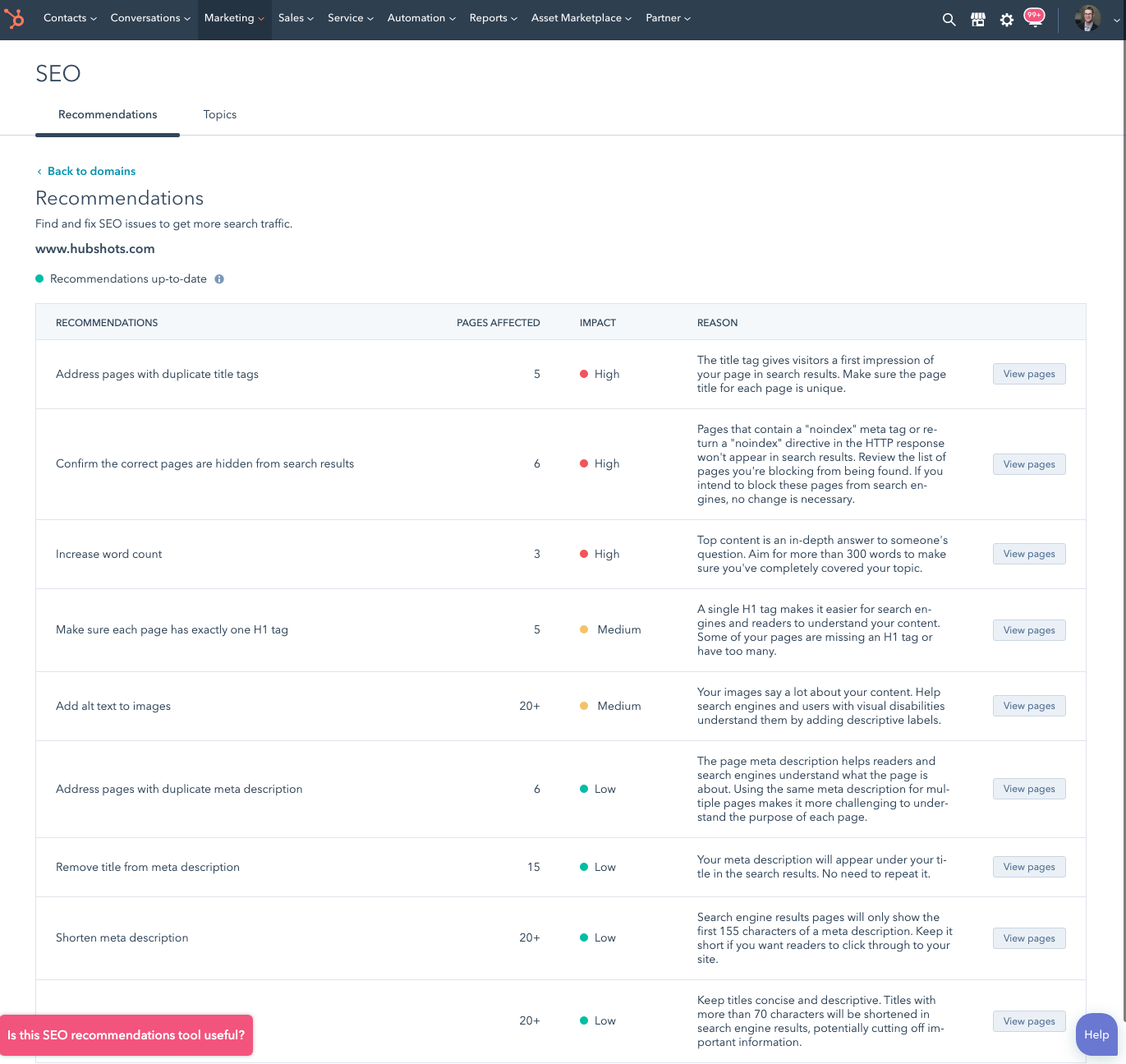
The recommendations are easy to view, and even action:
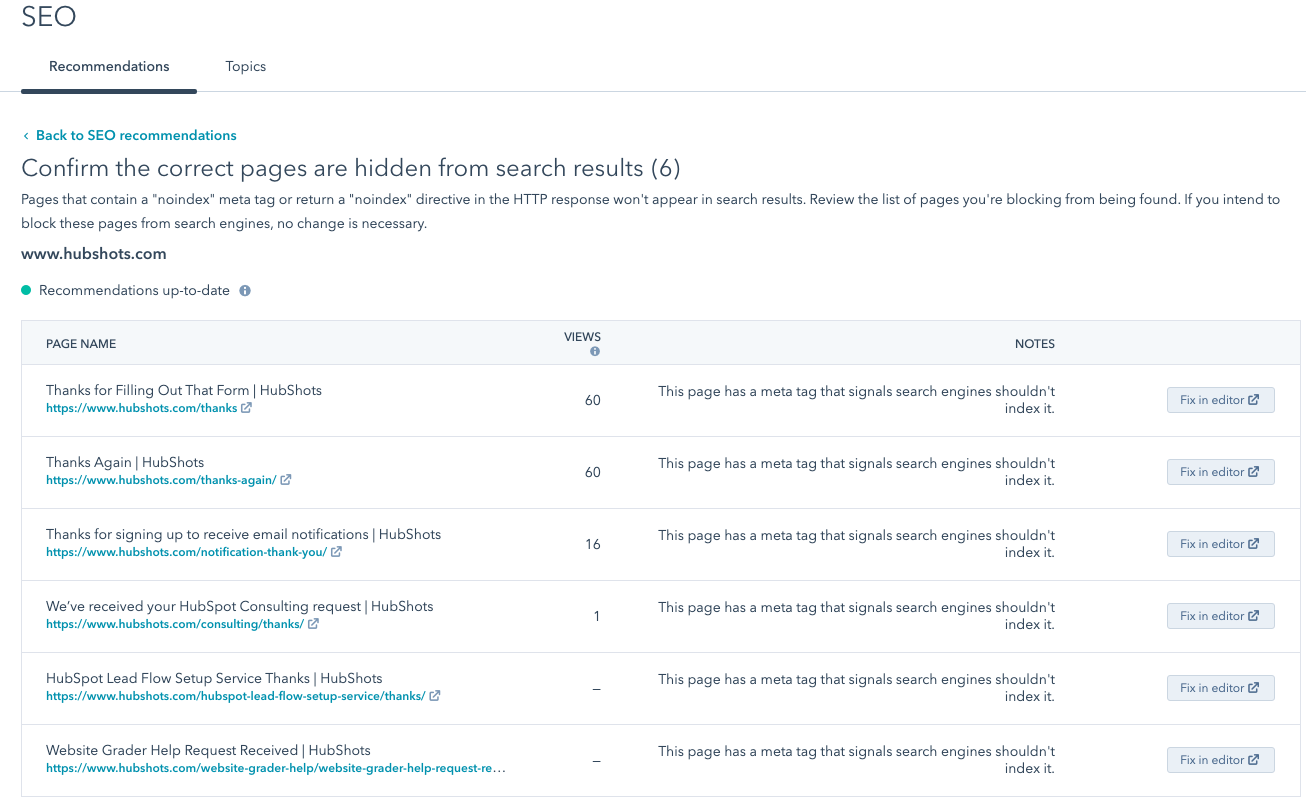
As well as these domain level recommendations, HubSpot also provides recommendations at the page level when creating/editing content:
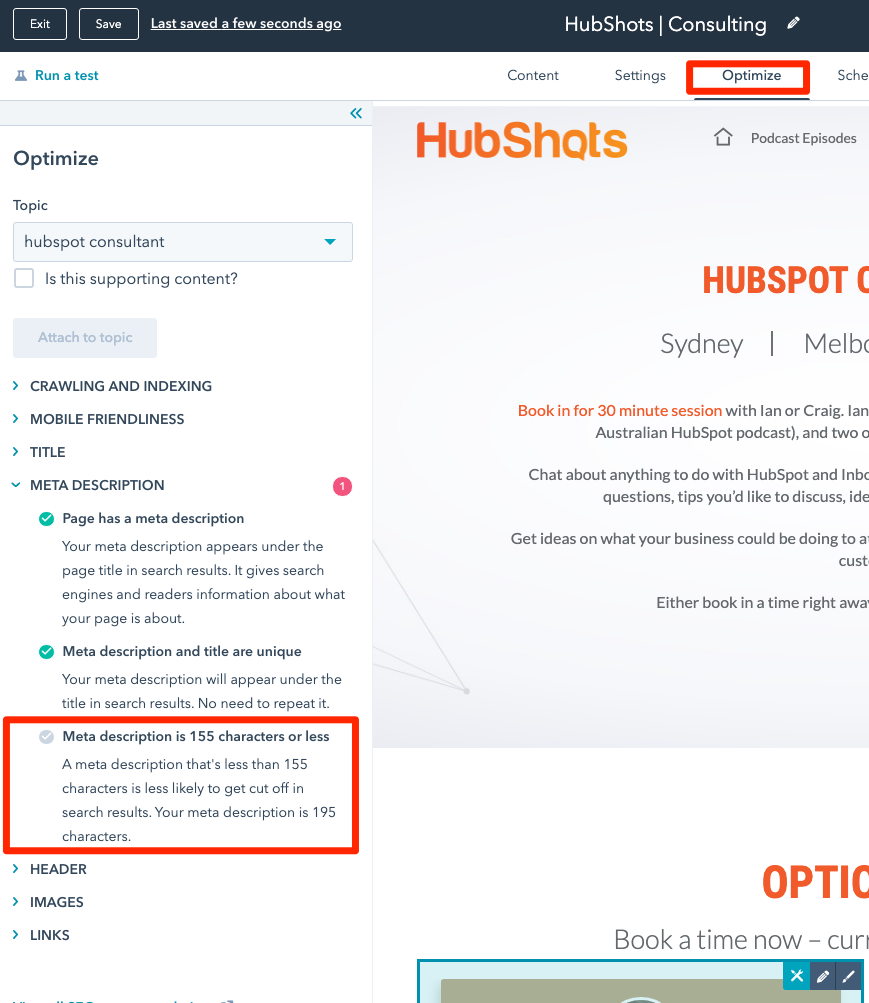
Checking the Optimize tab of your pages as part of the go-live (publishing) process is recommended.
Sometimes the recommendations can be ignored (Eg a Thank You page that is blocked from Google), but for the majority of your pages, spending a few minutes to check and optimise is well worth it.
In Episode 203 we discuss how HubSpot ABM has evolved.
If you are doing targeted outreach this is a great tool to utilise and get marketing & sales working together.
Training from HubSpot Academy on Getting Started With Account-Based Marketing (ABM)
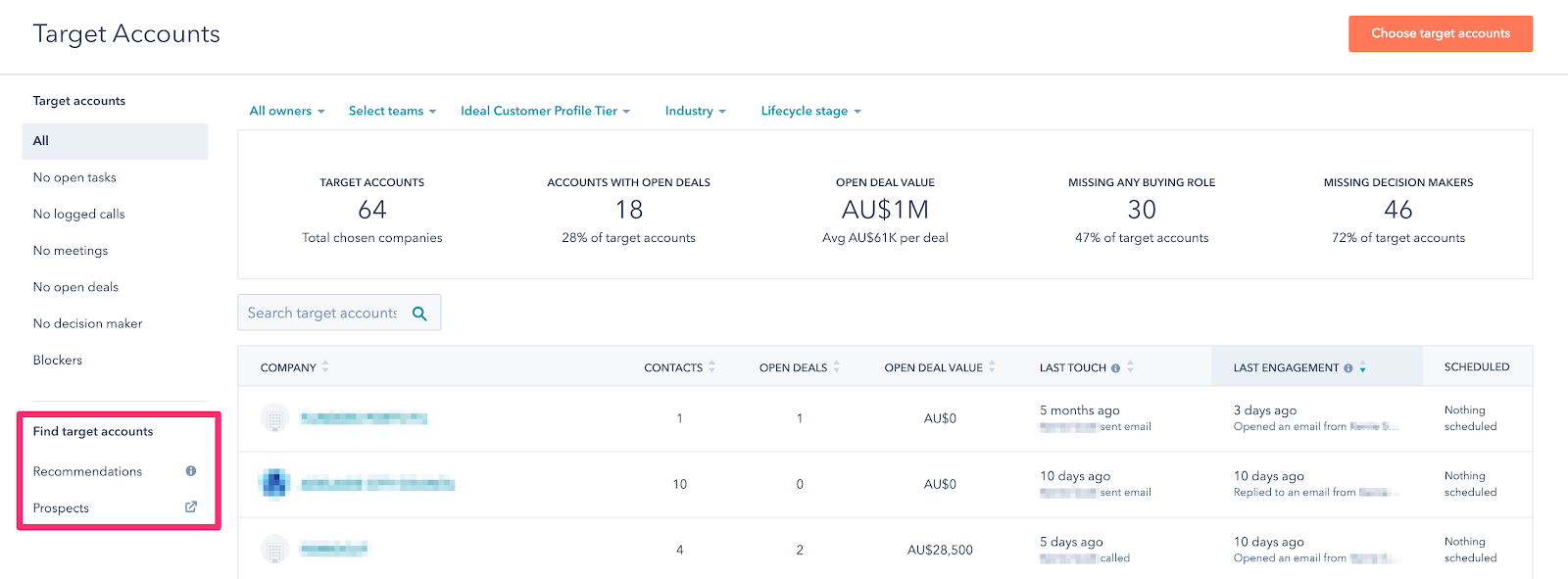
Top tips:
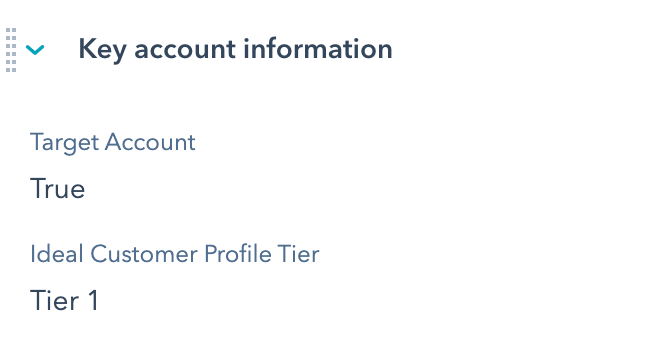
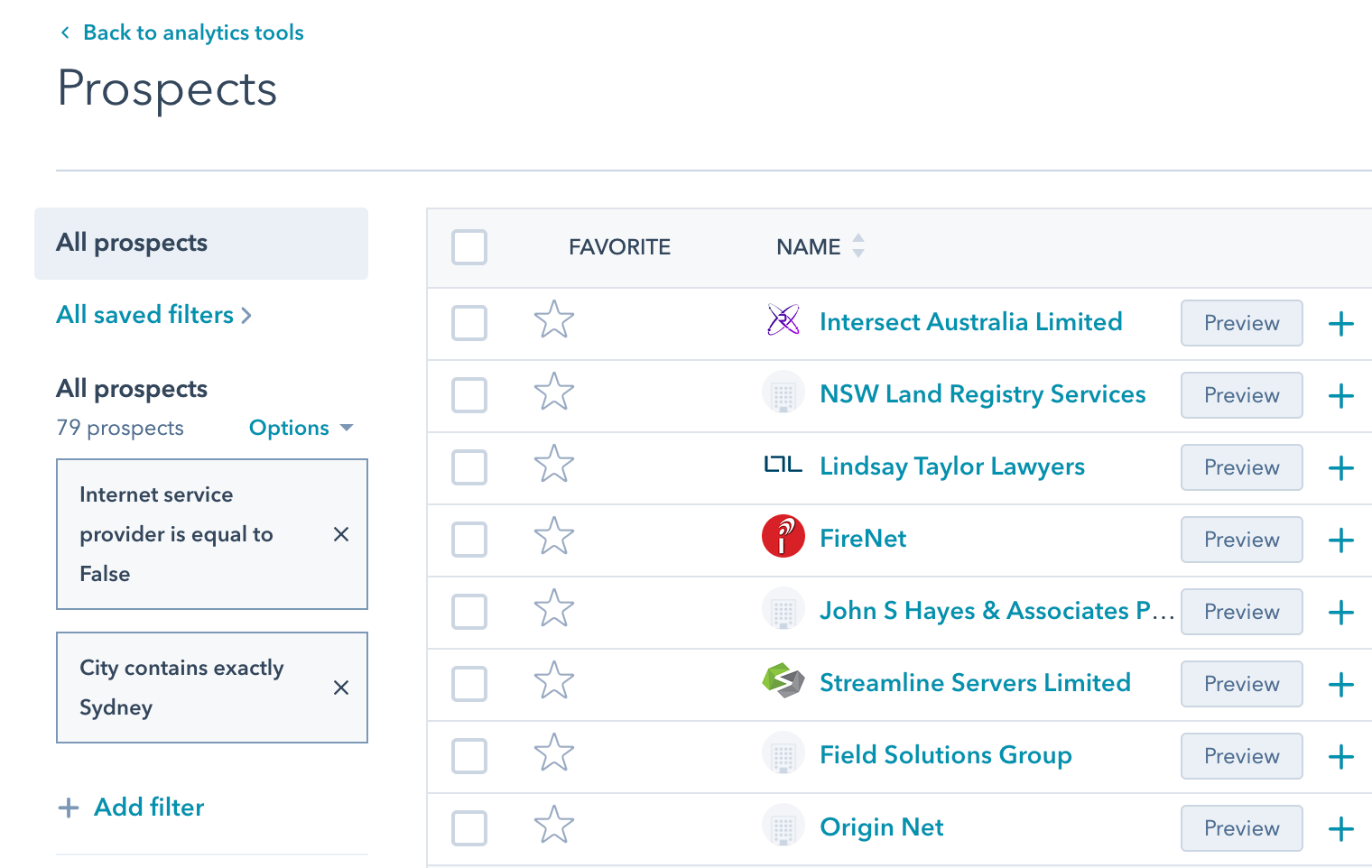
HubSpot Campaign Reports are a simple way to tie marketing activities together - as they pull in all the assets and activities conducted around a campaign, and also loop in influenced revenue.
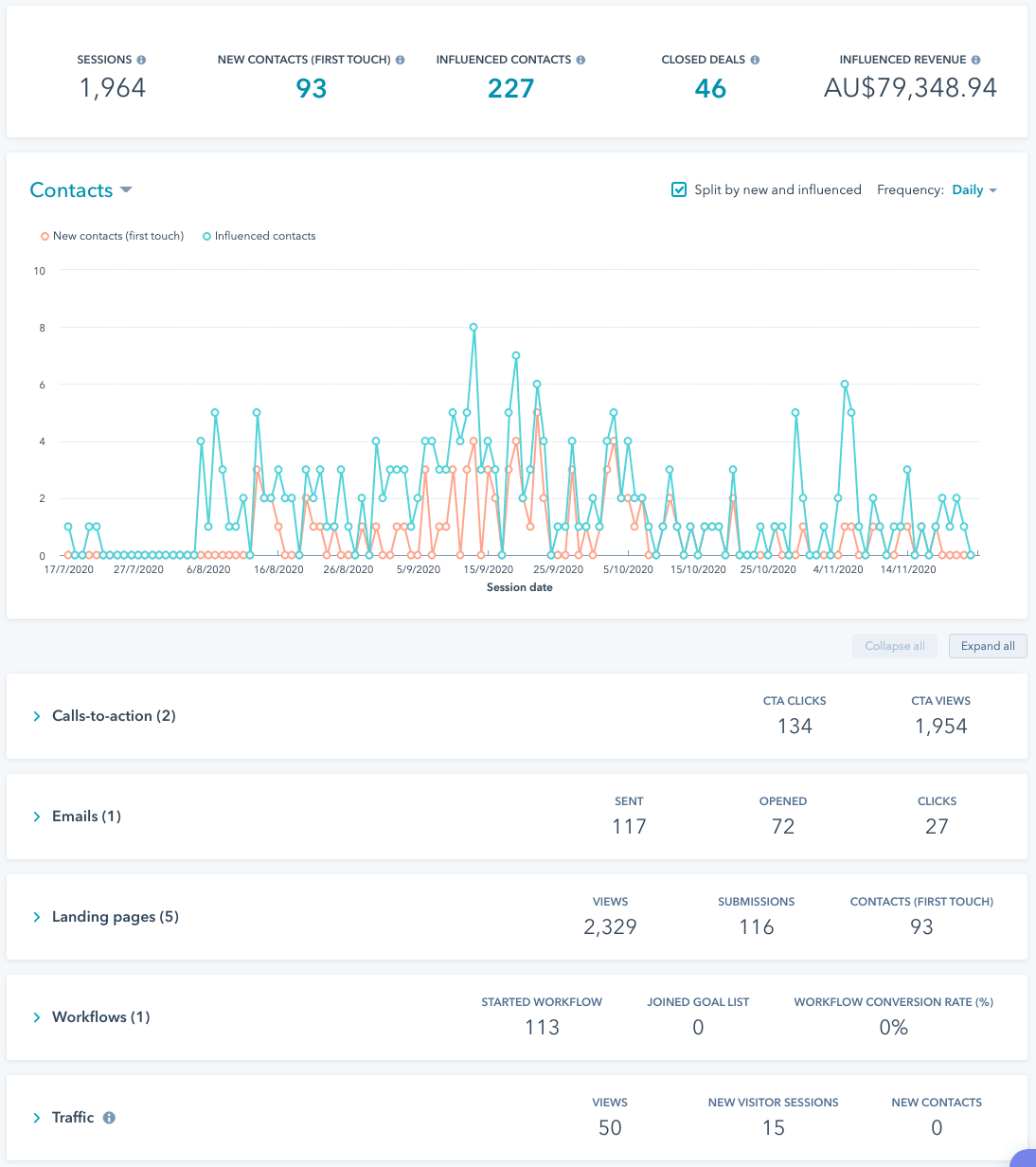
Tips:
HubSpot allows you to easily A/B assets including web pages, landing pages, emails and CTAs.
Here’s an example of how to start running a test for a web page:
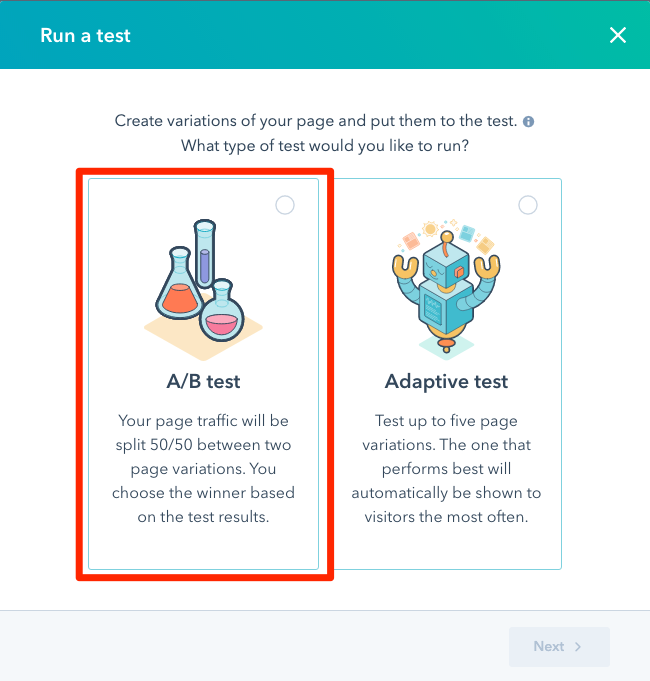
Note: Adaptive Testing is only available in HubSpot Enterprise (but HubSpot is well known for showing you what you’re missing out on, in the hopes of upselling you).
Tips:
HubSpot’s reporting engine has come a long way in the last year - now providing significant power across your various HubSpot objects (contacts, deals, companies, tickets, etc)
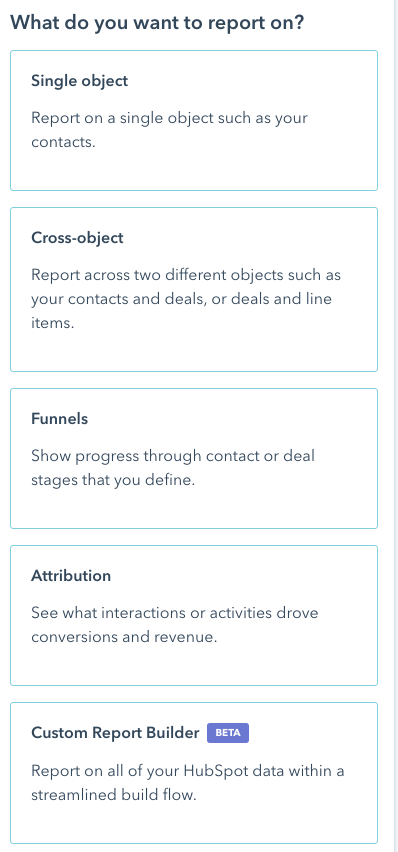
A key new feature is the Custom Report Builder, which allows reporting across a selection of objects, including ads, pages and web activities.
We typically setup Marketing reports for the following:
See also our episode on HubSpot Attribution Reporting (218) and Using the HubSpot Custom Report Builder (221).
A key part of unlocking the value of HubSpot Professional is by:
“So many people build their professional identity around their daily tasks.
Asking them to automate those tasks and move on to the next set of challenges is like asking them to become a different person.
It’s taken me a long time to understand this.”
Connect with HubShots here:
Connect with Ian Jacob on LinkedIn and Craig Bailey on LinkedIn
HubShots, the podcast for marketing managers and sales professionals who use HubSpot, hosted by Ian Jacob from Search & Be Found and Craig Bailey from XEN Systems.
HubShots is produced by Christopher Mottram from Podcastily.
Please share this with colleagues - it helps us improve and reach more marketers.
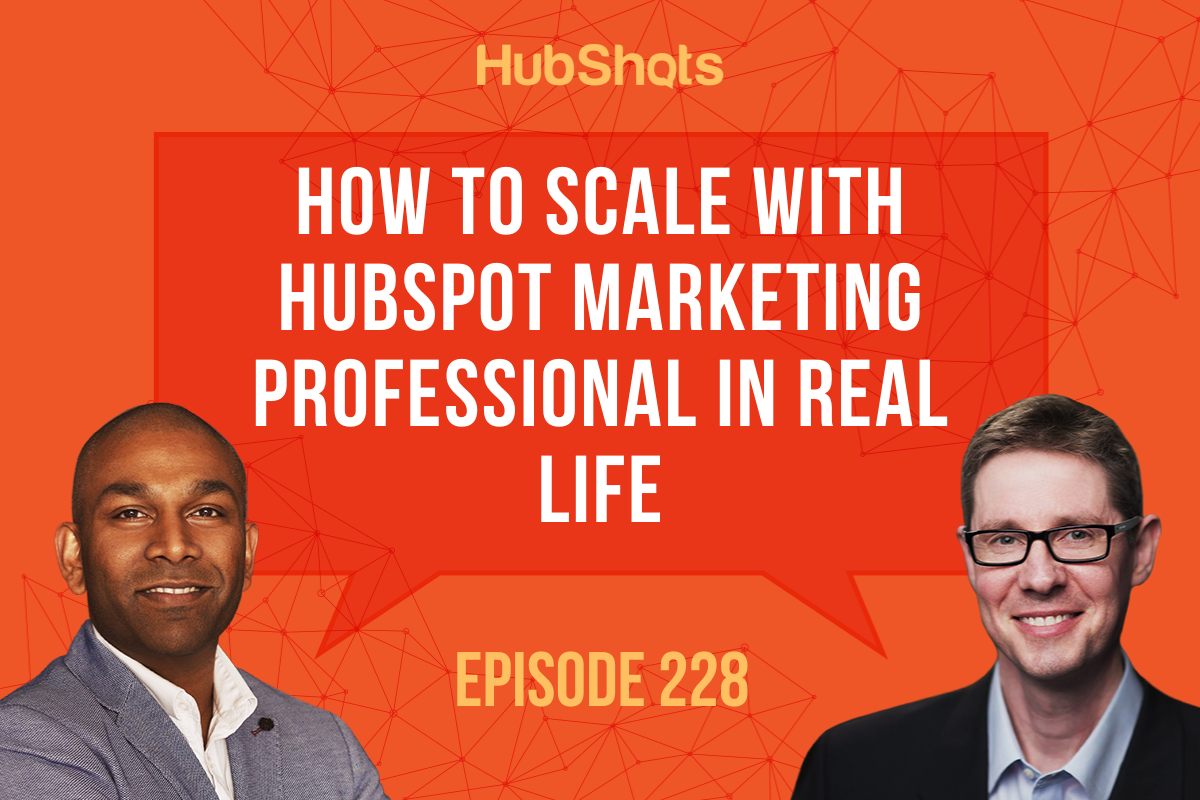
- All right, everybody. You're listening to HubShots episode 228. In this episode, we talk about how to scale with HubSpot Marketing Professional in real life. In this edition, we dive into automation and workflows, personalization and smart content, SEO recommendations and optimizations, ABM tools, AB testing, campaign and custom reporting. You're listening to Asia Pacific's number one HubSpot focus podcast, where we discuss HubSpot tips, tricks and strategies for growing your sales, marketing and service results. My name is Ian Jacob from Search & Be Found, and with me is Craig Bailey from XEN Systems. Welcome back, Craig.
- Welcome back. It's so good be back in the same room with you, Ian. So listeners, this is our first episode recording together in the same room since March.
- That's right.
- When lockdown came into effect in Australia, and we've worked remotely. and all episodes since then have been on zoom, so it's gonna be interesting to see how the dynamic changes.
- That's right, and I have to say, I've missed out our little chats and dinners together, and it was so nice to have dinner today.
- It was, it was great. And then we had Betty burgers, and then we went over for some cake afterward in the area, but that's good. You know, that's the thing that's changed, isn't it? I didn't have this in the show notes, but you've just prompted me. That whole, I guess what you do with people. Everything is so clinical and to a purpose. Get on site and cover this, that social element, and just taking time to chat about stuff, and think through things and ideas, it's all gone. It's so good, and you don't get that unless you're back.
- Correct, and that's how we came up with this show today, as we were having dinner. We had a chat and we came up with the idea for today's show. So listeners, we hope you enjoy it. So we wanna talk about our growth thought of the week, Craig, and in the last episode, we talked about HubSpot for small businesses. In the next episode, we're gonna talk about HubSpot for sales professionals, and how to use that, and to scale using HubSpot Sales Professional, but in this one, we're gonna talk about HubSpot Marketing Professional, and with some real life examples of how to use it.
- Yeah, that's right. And look, I think what we're gonna highlight is that a significant part, when you move from say, that small business approach to the mid to large business, is automation. You're a bigger company, you've got processes, and a key part of what we're gonna chat about tonight is workflows that automate those processes. And not only do they increase efficiency, but they reduce errors.
- All right, so let's start with automation or workflows as it's in the system, and how we utilize that in marketing. So, here are our top three HubSpot workflows.
- Yeah, that's right. And by the way, I've got a couple links to previous episodes. We've talked about workflows a lot. We love workflows, don't we Ian? But yeah, the top three things that we always get set up for clients, the first one is internal email notifications. Very powerful, because it's not just notifying anything and everything, it's about having qualified leads. You can filter them down so you don't waste salespeople's time or marketing follow-ups. So that's our first one, what's the second one?
- The second one is that nurture sequences. So, making sure that once you've engaged with somebody, you've got them in a nurture sequence and you've actually thought about what that is. And this is not easy customers. What I want to say is actually takes thought and effort to put this together. So well worth the effort. Isn't it Craig?
- It is, and not only that. With workflows, such as those nurture sequences, it can start just as simple as a series of emails spaced out, but you can also add in other items such as schedule a followup from the sales team, or check this lead, that kind of stuff. So nurtures can get complex and powerful.
- And the final one is to set life cycle stage of context, based on activity and behavior. And this is another key element to understanding where people are in that buying journey with you. All right, onto our shot three, which we're talking about personalization/smart content and reporting. Now here's where you can use personalization or smart content in the system, right? You can use it on landing pages, website pages, if you've got the website add on, emails and call to actions. And here is the top three things that we're gonna share with you where you can utilize this. So Craig, what's the first one, and you do this quite often.
- Yeah, well, just the way we use forms. So, and by the way, they're smart forms in a way, but yeah, just hiding or showing forms, that kind of thing on landing pages. So one of the funny ones that we've done is if we've got visitors, that we're getting a lot of spam from, from certain countries, we create a form that is essentially not submittable, and we show, based on smart content, we show that to some countries and then not to others. Just because it gets them in a bit of a honeypot and keeps them away. So that's a fun little way. Although I don't know if that's the highest value, but it's a good example of using smart content.
- And the second one, which most people are not aware of, is using smart call to actions to show different actions if someone has already taken, for example, become a customer. So I'll put a example here is, one of the CTAS that we do show is when people or a business is not a customer, we have a call to action that says, how can we solve your problem? Right? So we wanna take them to this page where it describes all the problems they might be having and they can choose one. Now, if they've already done that, and we know that they're a customer, we then say, "Hey, click here to listen to HubShots." because we are already working with them, so we understand. So that's a really simple way to utilize a call to action.
- And then lastly, similar to the one I mentioned before about changing out or switching out content based on localization, so, you might show specific content for one country and then different content for another country. But again, it can be lists, it can be personalizing. So if someone arrives on a page, "Welcome back." as you've similarly said with CTAs. It just makes the whole experience on a page integrated and seamless.
- And Lists is another one that is to do with devices. So you can change things based on device. So you might actually end up showing a different form if someone's coming from a mobile device, versus someone on desktop. And this is a very underutilized piece of technology that we often see happen, right, Craig?
- It sure is. Functionally It's quite easy to use. That's the thing. We're gonna talk about AB testing in a little bit, which can be harder and a little bit more cumbersome to set up, but smart content, much easier, and potentially much more effective.
- That's right. All right, on to Shot 4, and we're talking about SEO optimizations and in HubSpot Professional, there's a number of tools for analyzing as well as planning for Google optimizations and hooking in your Google Search console data. Right, Craig?
- That's right. You can link in Search console for some of the SEO planning. In the show notes, I've got screenshots of the actual recommendations page, and this can be set up at the domain level. So for example, we've got some recommendations there for the HubShots domain, and they're very easy to review, and also you can action them on the spot, so that's quite nice. And then drilling down further at the page level, there's a whole optimized tab. It's kind of, they put it front and center. It's not like you can miss it. The optimized tab, which will give you actually recommendations for the page. And so, this should be part of your go live or publish process. You've got a page, okay. The contents ready and reviewed, great. Now just check the optimize tab, engage those recommendations, publish, and you're live.
- All right, Shot 5 is ABM tools. And this is for account-based marketing. Now, somebody might go, hang on, isn't that a sales thing? No, it's actually a marketing and sales function. So, we're gonna talk about ABM in this context to do with marketing, and we discuss some of this in Episode 203, but why we're highlighting this is, it's a great way to target our outreach and working with your sales team. And understanding who the people are in the organization. So here are our top three or top four tips to do with ABM. The first one is, making sure you actually have your data input correctly on the company and contact records. And one of the key things that we do is make sure we create a separate sidebar widget so to speak, where we actually put the key account information on the contact in the company, so it's easy for people to identify that information in the system.
- That's right. By the way, getting that data in place is also, you can use that in Lists, which of course, then you can feed back into some of the smart content we talked about in the previous tip. So, having key accounts, that actually might influence some of the personalization of content that we talked about in the previous show.
- And not to mention Craig, you can feed those lists into the ads manager and into Facebook and Google as well.
- That's right. So it's a very nice way that sales and marketing fits together. We'll talk about more as related to sales in our episode next week, but yeah, account-based marketing, account-based sales, as you said at the start, yeah, very intertwined.
- The second one we wanna talk about is making sure you've actually put in the data and it's tracking. Now, why do we say this? There is a recommendations tab, or the little icon where you can click and you get recommendations in the system. And it will show companies that HubSpot thinks might be a good fit as target accounts. Each company is like an existing target account, based on industry size, page view data. So as you choose more target accounts over time, the recommendations do become smarter and better in the system. So, just be aware of that. Again, like we say, garbage in, garbage out. So the better you do this, the better you get a recommendation. Number three, Craig?
- Well, the prospect's tool, which we've mentioned a number of times on the show as well. It's one of those hidden gems. I have to remind myself often to come back to this, 'cause I forget about it. But yeah, it's part and parcel of the whole targeting piece, isn't it?
- And a tip here is when you're using prospects tool and you're trying to, not just look at the entire bit of data, is use the filters on the left-hand side to narrow this down. So a really common thing we would do is narrow it down by city, for example. So in the example, we just wanna see all the companies that have got Sydney in them, right? Or the origination point is Sydney. And it's a great way to narrow this down. By default, you'll say if it's an internet service provider, we don't wanna see that. Some of them get through, listeners, but there is a way to get this out of the way. So, it's a great tool to utilize. And number four, I think we've highlighted this is, what this does is get the sales and marketing teams working better together to understand who they're marketing to, and how they should market to. And we put a link in the show notes to some ABM training that HubSpot Academy has done. And I would encourage everybody, even if you don't use this, do the training, because it might open your eyes to something else that you can do differently in your business.
- It's getting better as well. And I noticed that HubSpot have been pushing a lot of webinars and things around ABM lately in the assets, so the tool has gotten to a point where the ABM tools are actually quite sophisticated, and they are, and they're being used well by companies, and so, yeah, they're really pushing it. So, I just mentioned that because I know a lot of people were very underwhelmed with the AB toolset initially. It's come a long way since then. Give it another look in, if you haven't for awhile.
- All right, on to Shot 6, which has to do with campaign reporting, Craig. And now, HubSpot campaign reports are a simple way to tie marketing activities together as they point all the assets and activities conducted around a campaign, and also, this is the big one, looping in influenced revenue. And why is this important?
- Well, this is it. And look, it's a bit of a two-edged sword this, because in some ways it's very helpful, but in others it's a little bit misleading. Influenced revenue, influenced contacts. The reason it's great is because you can see a campaign did have influence, or did impact contacts and revenue. But often the way that that influence revenue is calculated is just any touch with any campaign. So you kind of have a campaign which might not have been incredibly successful, but it tended to touch a few contacts, and they might've been sold and closed by other campaigns, they are counted in influence revenue. So just be aware that it's good and bad. The good though is that you can see if a campaign has no impact on revenue or contacts. In some ways, knowing what's not working is valuable intel. That's quite actionable, right? You run a campaign for a month, no influenced contacts, no influenced revenue, let's turn that thing off, right? Okay, so that's the value of a negative result, but on a positive result, and we've got a screenshot here from one of our clients, just seeing how all the things tie together, all the assets, landing pages, emails, CTAs, social interactions, blog posts, all of that kind of thing pooled together. The important thing is to make sure you're doing proper URL tracking. So get the URL Builder involved, especially for sharing on social. Make sure all your campaigns are linked together with an asset, and then you'll start seeing the data pooled together into a nice overview.
- And I think Craig, one of the things you've highlighted here is to make sure you name things correctly and in a helpful manner, because in some of our accounts, we've got lots of campaigns, and after awhile you kind of go, "Oh, when was that?" or "When did that happen?" and it's really hard. So being really clear with your naming conventions and having a standard is a really big plus when setting all of this up.
- Ian, that's right. And pro tip, because this is one of the few things that you can't rename. Once you set up a campaign name, you can't change it. The reason for that is because the campaign name is used out on URLs that are used on social, things like that you can't rename them out on Facebook once they're out there. So yeah, get the names right. The other thing I will just highlight around your thinking around campaigns is, think about the number of campaigns you're gonna run over the year, and that will help you determine how much granularity you have. If you've only got a few, then be really granular on the campaigns run. But if you're running a ton of them, maybe group them into more theme, campaign themes to save you trying to drill into 100 different campaigns. Try and keep it around 20 or 30 for the year. That makes reporting a lot easier.
- Craig, that was like a $1,000 an hour tip right there. All right, let's dance on to Shot 7, which is AB testing. And HubSpot allows you to easily AB test assets like web pages, landing pages, emails, and calls to actions. And so, why would this be important is, you might wanna find out what works better. So, a really simple one that we often test firstly with clients is call to actions. You might think, is this wording better than the other? So for example, one we used to test was, get a quote versus request a quote, and see how does that pan out. So it's really interesting, because in certain industries, a certain wording will work differently or better than those in a different industry or a different category of business.
- I think that's a really good tip. And the reason to start with CTAs is because they are so easy. And they're often overlooked. Actually, we've got people say, why would I use CTA links on pages? Isn't that just extra hassle? Why don't I just include the link? Easy to edit on HTML View. And you're going, yeah, well, that's true. Two reasons why CTAs are great, one, is you can do AB testing, but two is you get the tracking, you get the reporting. How many views and then how many were clicked, so that you actually get conversion rates on, and of course that flows into your AB testing there. So yeah, really useful and really simple to do as well. It's not hard once you know how to use CTAs.
- That's right. And also the next part, you could decide to test different website pages, and see which performs best. And I'm sure people know, and we go through this in Episode 215 about email testing as well, because this is really important. And I think email testing is one of the most underutilized features within the system, because we tested this out, right? And we tested it out with many clients, and the significant increase you can get, just from a single test on that email can be massive. Can't it, Craig?
- It can. And the simplest thing, by the way, when we AB test most of our emails, we hardly ever AB test the content. It's always the subject line, 'cause it's so easy. You get your email ready, it's almost like that's part of the go live schedule piece. Okay, we've done it. Yeah, email sign off, ready to go? Okay. Final step, just variation of the subject line. Bang! Go, that goes out. And you just learn over time. One final comment about AB testing is a tip that I used to give, was don't bother AB testing if you're not gonna get enough engagement. Because to reach statistical confidence, you've kind of gotta get a certain number of views on a page, a certain number of opens on an email, that kind of thing. But as you reminded me earlier today, it's like, don't worry about that, 'cause HubSpot works set out for you. It's not gonna give you a winner if it's not statistically significant. So, if you can, just AB test everything. Even if you're not sure it's gonna get many views, maybe just test something on the page, a title, maybe test, definitely test the email subject line. Statistical confidence will be highlighted by HubSpot.
- Correct, all the tools are there to make a difference, Craig. On to Shot 8, which is custom reporting. And HubSpot's reporting engine has come a long way since last year, and we see a lot of power across various HubSpot objects like contacts, deals, companies, and even coming very soon, is custom objects. And you would think, why is this important, Craig? Why is it important? And why would I wanna use this report builder?
- Well, first of all, custom reports are really handy for those quick things. So quite often you get into custom reports via a dashboard. You set up a dashboard, okay some standard reports, bang, bang, bang, put them on. Hang on, I wanna tweak that a bit, or I wanna clone it and just change something. Bang, takes you into the reporting tool, which, they're actually called custom reports. You can edit them, so very handy to use. But the new builder I was referring to, yeah, actually gives you a lot more power across a lot more objects, and it really is giving you this deep data crunching. And as you said, it's gonna expand out over custom objects, which I'm sure is the whole reason this new report builder is in place. We've got a whole episode on that back in 221.
- And we also have, in Episode 218, we talk about HubSpot attribution reporting, so well worth a look.
- Well, and there's four main reports that we typically set up for our clients. What's the first one?
- The first one is contacts by source and lifecycle, Craig.
- Yep, drilling down, maybe removing offline sources so that it doesn't pollute.
- Correct.
- Of course.
- Second one being contacts by timeframes.
- And also custom contact filtering by departments. So we've got some clients that have multiple departments, and so in a standard report on a dashboard, you'd get all the contacts, but if we've got a custom property that identifies, oh, this was a particular department of that company, 'cause they've got various, you can just filter down to that to show on specific dashboards for those departments.
- And the final one being ad campaigns. And this is really great when you're trying to understand what's going on with your paid advertising.
- It's so good, because the whole value prop of having ads in HubSpot, that ads reporting, is it's directly tied to, well, not only contacts, but customers. So you can see how your ad campaigns have driven customers. That's really powerful. You can't get that from Google Analytics easily, can't get that from the Google Adwords interface easily, can't get that from Facebook easily, HubSpot's where you get it. And yeah, providing those reports on a dashboard, very powerful.
- And finally this is, in Shot 9, we were gonna bring this all together, and as a key part of unlocking the value of HubSpot professional, here are three things to consider. Have clear processes defined, as this will allow you to easily automate your tasks.
- I think that's right. When companies are getting larger, having processes in place allows you to identify efficiency points. And you just say, right, you've got that process, that's great. We can automate these pieces of it. Bang, straight on HubSpot.
- The second one, Craig?
- Like we said earlier, being clear on the campaigns you're gonna run and the channels you'll target so that you can set up your tracking effectively. And this is the thing, if you don't have tracking in place, then just why bother? Because reports won't be meaningful, you won't have actionable intel.
- And finally listeners, having a test and measure approach so that reporting is actionable. And this is really key with everything that we talk about, is don't be afraid to try things out and test new things. And I even say, have a budget. Say, 20% is generally a good number. Have a budget set aside to test something new that you've never done before. So I encourage you to take that on and implement.
- That's right. And the other thing about that test and measure approach, where we talk about actionable, is even if you go back to the AB testing and the only new thing that you take out of this show is that you're gonna AB test email subject lines. Let's say that's the only thing you take away from the show. Not only will you get results, 'cause email campaigns are still great. We know the power of emails. So you get results. You send out a campaign and get results, but you also learn something. Oh, that B version didn't work. Oh, that's intel.
- Correct. Craig on to our quote of the week. We can't finish the show without a quote. This is from Blair Enns, co-host on the 2Bobs podcast with David C. Baker, a friend of the show who we love.
- That's right.
- Yeah, this is his quote, he said, "So many people build their professional identity "around their daily tasks. "Asking them to automate those tasks "and move on to the next set of challenges "is like asking them to become a different person. "It's taken me a long time to understand that." He says. End quote. I thought that was appropriate for today's show, because it's almost like that should be something you aspire to, not be weary of.
- That is exactly right, Craig. That's a Cracker. Anyway, listeners, we hope you enjoyed this show. We'd love you to share with anybody who is considering using HubSpot Professional. As we said, always, if you want help, we are available to help you in any time or any time zone in any place, and we would love to help listeners of the show. We love talking to you guys. Please also connect with Craig and myself on LinkedIn, and send us a note. We would love to connect with you and see what interesting things you guys are up to. Well Craig, until next time,
- Catch you later, Ian. Hey there, thanks for listening to this episode of HubShots. To get the latest show notes, HubSpot tips and marketing resources, sign up at hubshots.com. You can also book time with us to help you grow better with HubSpot.
.png)
Welcome to HubShots Episode 229: How To Improve Your Sales Results using HubSpot Sales Professional This edition we dive into: Deal stage, task,...
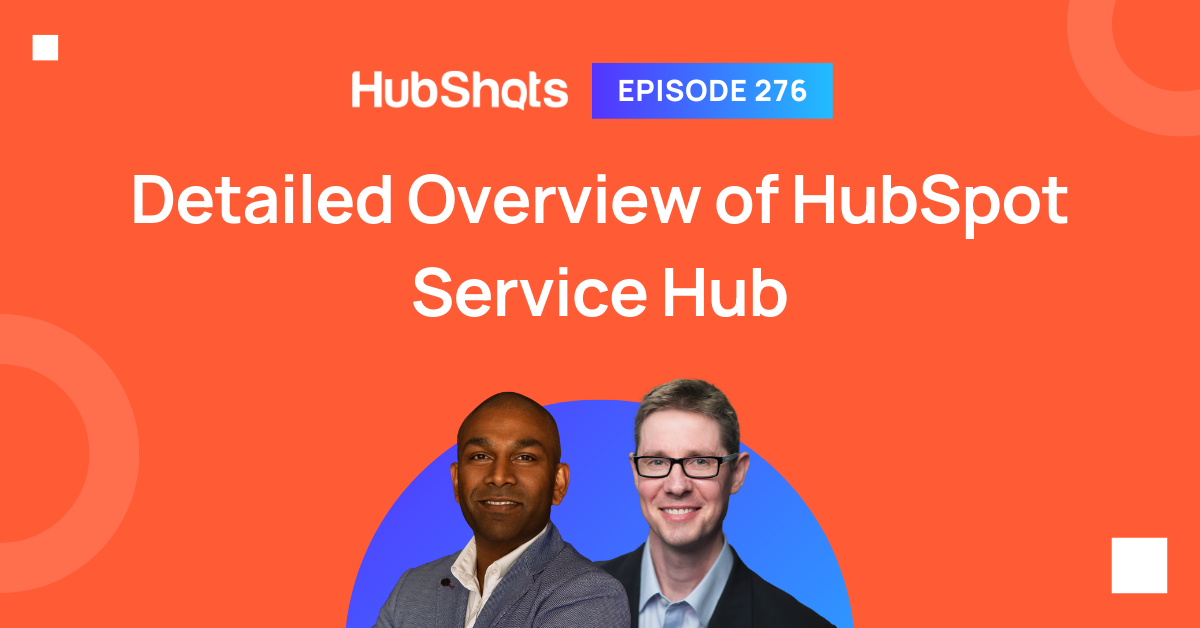
Welcome to HubShots Episode 276: Detailed Overview of HubSpot Service Hub This edition we dive into: Speed of response is your differentiator ...
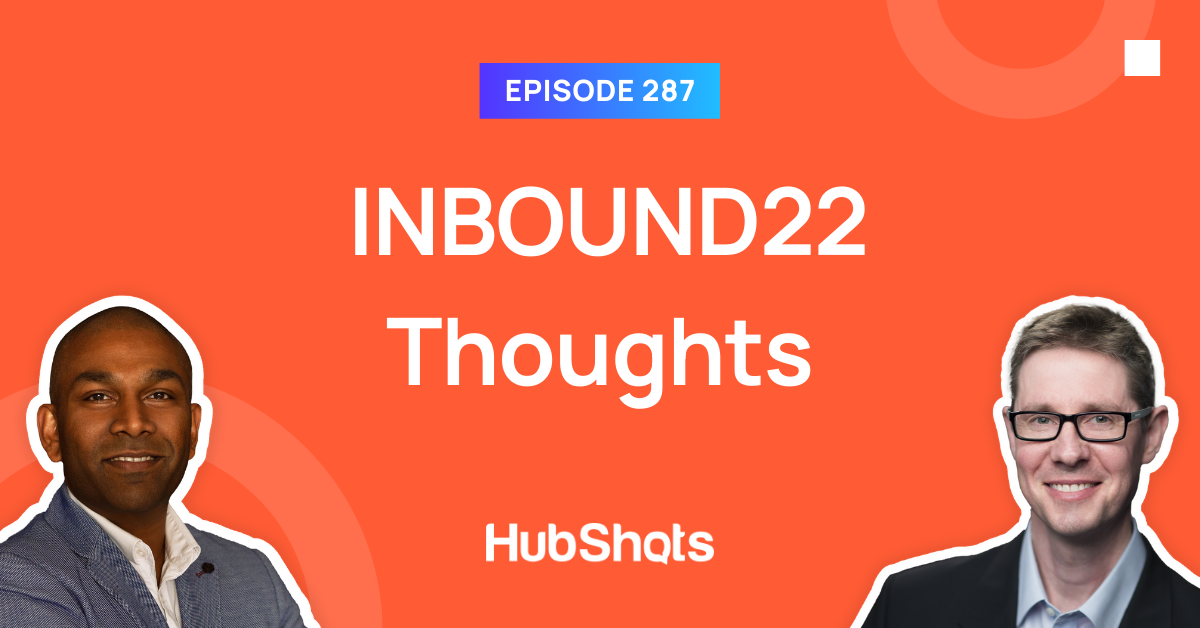
Welcome HubShots Episode 287: INBOUND22 Thoughts This edition we talk about INBOUND22 and dive into: In-person versus Online format Theme:...
